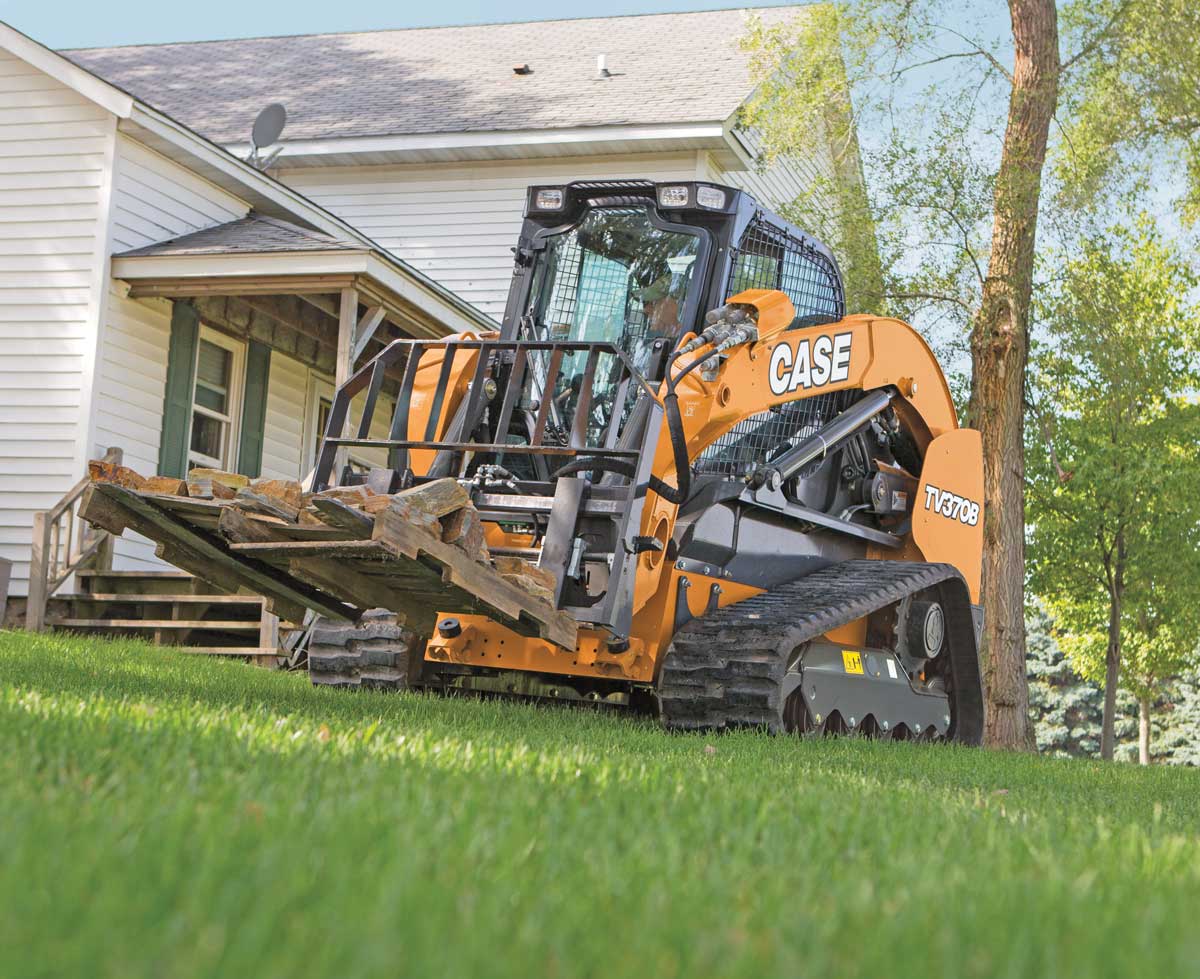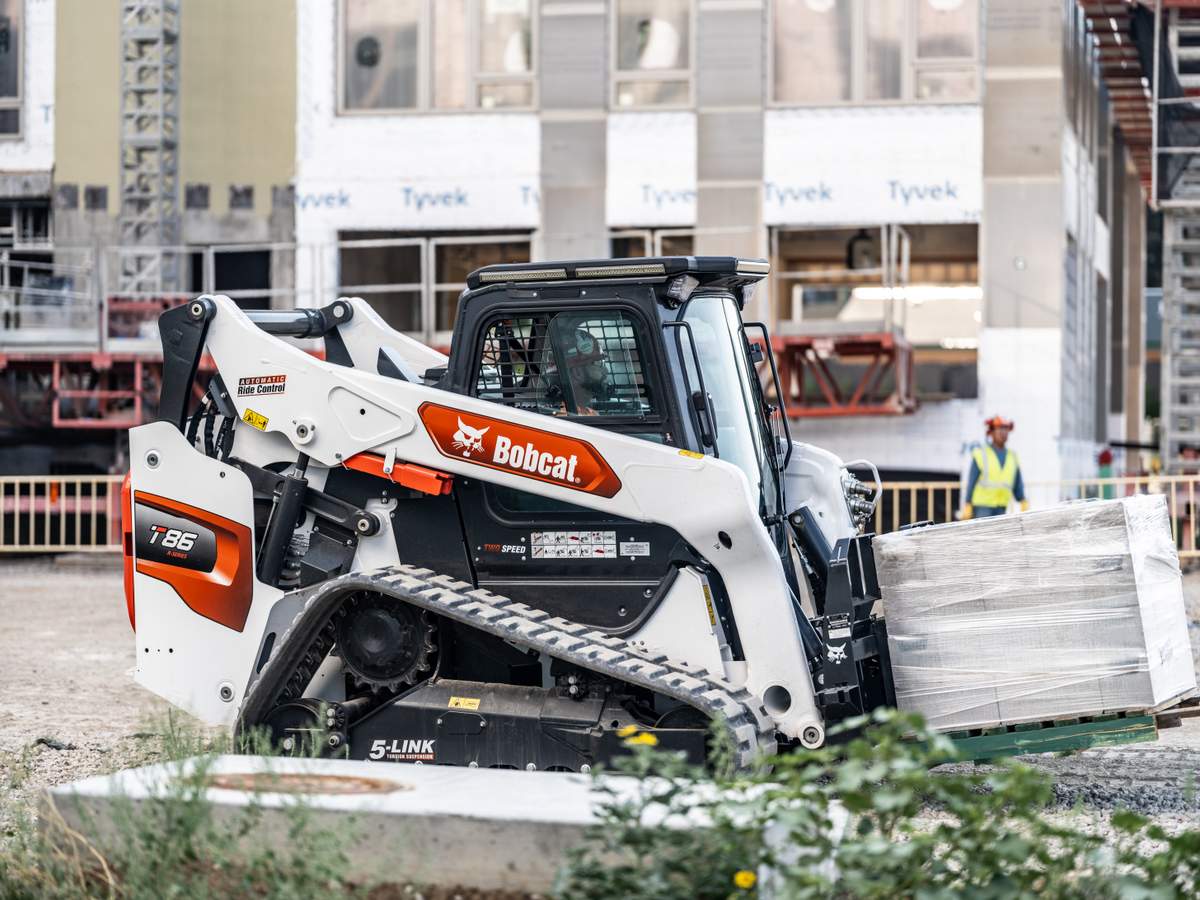Clean Sweep
Most contractors are familiar with angle brooms on the front of a skid steer loader, clearing away jobsite dust and debris or whisking snow off sidewalks and parking lots. However, paired with a skid steer’s smaller counterpart — the compact utility loader (sometimes called mini track loaders or mini skid steers) — can use an angle broom as an effective tool for keeping areas clean.
“Speed of debris removal and low impact to the underlying surface are probably two of the major benefits of using an angle broom attachment,” says Justin Odegaard, attachment product specialist at Bobcat Co. “The attachments are ideal for large campuses or complexes such as colleges, hospitals or shopping malls and also do well in housing developments.”
One of the advantages of an angle broom attachment is the polypropylene bristles, which are gentle on underlying surfaces but capable of flicking away a variety of materials. This makes the attachment ideal for sweeping anything from driveways, sidewalks and parking lots, to loading docks, warehouses and more without damaging the surface. And with the compact size of a compact utility loader, the angle broom attachment can be maneuvered into narrow spaces and tight areas for removal of dirt, dried mud, light snow, leaves and other debris.
Angle Broom Operation
Angle brooms are an easy attachment to use, but there are a few things operators should keep in mind. When starting, the operator should lower the lift arms and engage the hydraulics into detent position. Then, slowly tilt the broom until it lightly touches the ground; apply a small amount of downward force to the broom by tilting forward slightly. Brooms are most efficient when there is only a slight deflection of the bristles; this provides a flicking action to whisk material away. If too much down-pressure is placed on the bristles, the broom will still work, just not as efficiently. Bristles will also wear quickly with too much down-pressure.
Angle brooms pivot about a pin. That pin should remain roughly perpendicular to the ground so that, as the broom is angled from side to side, the bottom of the broom will remain parallel to the ground. To achieve this, lift arms will likely be elevated slightly when using new bristles and lowered through time as the bristles wear down. Typically operators do not need to run the machine at full throttle when running a broom, especially with new bristles. As the bristles wear, more engine speed is required to maintain bristle speed. To save fuel, however, the engine should be run only at the speed required to move the debris the necessary distance.
If material, such as snow, is compacted on the surface, brooms will typically not remove it, but will instead polish the surface. The surface should be cleared with something like a bucket or a scraper attachment to loosen the material before the broom is used. Because angle brooms have the ability to move debris (snow) with their flicking action, stones or other materials may also be thrown some distance. Care needs to be taken to direct the debris away from buildings and vehicles; again, the engine should be run only as fast as needed to move the debris the distance required.
Angle Broom Maintenance
Inspecting the bristles daily for wear is a critical maintenance practice for angle broom attachments. If bristles wear down to the core, then they won’t be able to sweep properly. “One of the most common ways operators misuse the angle broom attachment is by applying too much down pressure on the bristles,” Odegaard says. When bristles need to be changed, it takes less than an hour on most angle brooms manufactured today. Bristle replacement depends on manufacturer, but one of the most common methods is sliding multiple wafers onto a tube structure.
Very little additional maintenance is required for direct-drive brooms (direct-drive means the hydraulic motor is directly connected to the drum or bristles), as motors are designed for long life. Chain-driven models (the hydraulic motor is tied to the drum or bristles via a chain) require lubrication and periodic tightening of the chain.
Many angle brooms also have parking stands, especially on larger models. These stands should be used if they are on a broom to maintain the shape of the bristles. Otherwise, the bristles may become distorted which leads to a shortened life and less efficient sweeping.
Christopher Weishaar is a technical writer for Two Rivers Marketing, based in Des Moines, Iowa.





Comments are closed here.